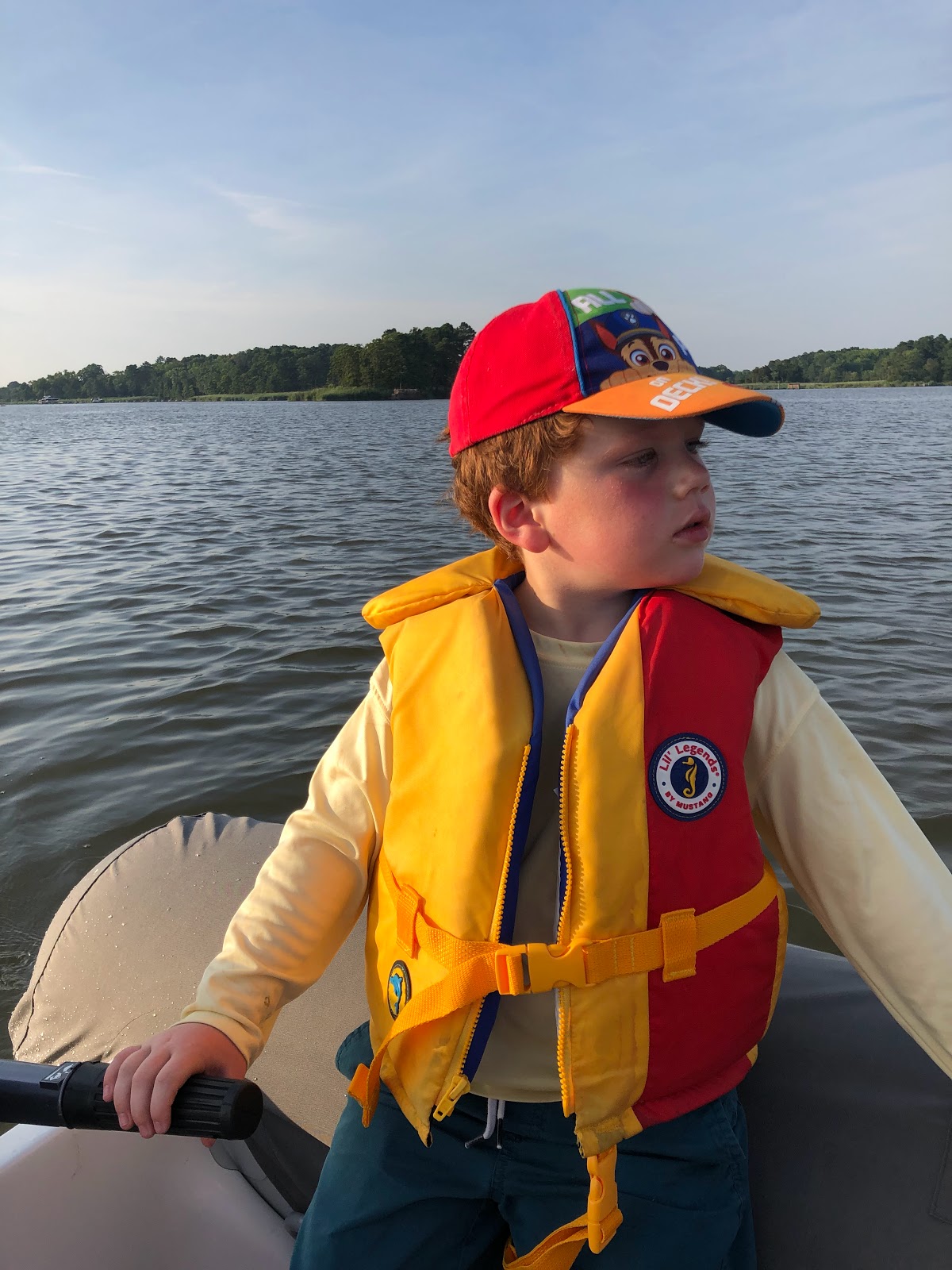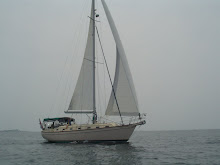Thomaston to Baltimore Return.
September 1, and the new/replaced VHF radio is installed and reported as working. George is in Florida. Scott is in Canada. I call an old Goffstown friend, Darrell Lockwood, to see if he wants to take a boat ride. He says yes, of course. Though a new resident to Maine and with plenty of unpacking left to do, Darrell was excited to go. Having grown up around Buzzards Bay, we assumed that he had plenty of on water experience. But, not since childhood and his recent, well used membership in Freedom Boat Club. Nevertheless, Darrell makes the perfect crew member. Smart, thoughtful, willing to learn and ready to take in whatever experience has to offer. And, he could pick us up at the Portland Airport and drive us to Thomaston!
After some final tuning with the yard and provisioning for the passage we spent the night on the Lyman Morse dock and readied for an early morning start. It’s the start of a chilly Labor Day weekend and we will eventually need to decide whether we are on a quick delivery or a leisurely Autumn Cruise. But, first things first. We have a date with Darrell’s wife, Maryanne, who is meeting us at Biddeford Pool Yacht Club for dinner. That’s about 35NM for us to a BPYC mooring for the evening. We drop the dinghy and pick up Maryanne for a great home cooked dinner afloat. Quite a chore against the fast moving current to get her back to her car in the dark, but we manage to handle it with the 5 hp Nissan outboard. The dinghy lift can wait till morning.
Next day the “cruising” plan was an “easy” day from Biddeford to Gloucester.
Jumping head first! An incredible sight!!
Lots of splashing.
No room in the City Mooring Field with the Gloucester Schooner Festival going on. But, undaunted we anchored in a settled cove between Ten Pound Island and Rocky Cove for a quiet night. So quiet for us, that none of us bothered to wait up for the scheduled fireworks. Besides, the next morning was a long jaunt through the Cape Cod Canal to Onset. That meant another 0600 start.
Our morning out of Gloucester included a short Memorial Service for Maryanne’s dad, Ed Murphy at N42°33.890 W070°40.347. Ed was a Navy man, Sky Marshal, Undercover DEA agent along the eastern seacoast, Boat Builder and Jack-of-all-Trades. He certainly was the kind of guy who could do, and in fact did, everything. We had him on Endurance only once, for a day sail to the Isles of Shoals, but he was the type of guy you could cross oceans with.
Sunday afternoon was busy in Onset, but we managed a close-in anchorage and readied for the next day’s run to Block Island. Tuesday was bright, clear and calm as we began our exit from Onset to start down Buzzards Bay. In less than a mile though, not out of Onset even, I thought the engine sound was not quite right. I checked our stern - we had no exhaust water exiting. That could mean we would soon be overheating. We pulled out of the channel and quickly anchored in a shallow spot. Assuming this was an easy task of replacing the water pump impeller (a task I had done several times before without trouble – foreshadowing here), I set to work. It was early morning and even with the delay we could still make Block or Port Judith to anchor for the night.
Not so easy. I could not get the impeller to budge. I blew a fuse to the starter by arcing terminals with my vise grips. I pulled out some of the rubber fins on the impeller. I replaced the fuse. At Darrell’s suggestion, we realized that it would be prudent to shut off the battery so as not to make the same mistake. Then pulled more fins off the impeller. Then realized that no progress was made. So,…a call to Sea Tow. And in the dead stillness of Buzzard’s Bay we were towed the short distance to Burr Bros. Boatyard in Marion, a place that we had used before and trusted completely.
But, it was Labor Day so we wouldn’t be able to see a tech until Tuesday. Burr Bros. only had a dock hand and a launch driver working for the day. They managed to find us a mooring knowing our predicament. We had a nice walk about Town, an ice cream and a nice afternoon despite being skunked by Darrell in cribbage.
SKUNKED!
The next day the tech arrived and had the same problem with the intractable (now embarrassingly near fin-less) impeller. His plan then was to remove the water pump and take it into the shop to pull things apart. Luckily, he had to return to shore for the right tools. He came back with another tech and together they were able to get the nearly nude impeller out and replace it with a new one (of four) that I had on board. We were good to go about 2:00 in the afternoon.
Oh, did I mention that the day before the launch driver asked if we had checked our sea water intake? Maybe it was just clogged. Well, that comment kept me awake for a good part of the night. And in the early morning I opened the Sea Strainer … no water rushed out. I took the hose off the sea water intake and…no water rushed out. We then connected a hose to the anchor washdown pump on the bow and blew water into the sea water intake. Guess what. Sea water gushed out. Turns out that process was easier than destroying the impeller. Well, the impeller was a year overdue for replacement anyway.
Darrell had the helm at night as we passed Block Island and its offshore wind turbines to
the South.
We decided to run straight to Delaware Bay in order to stay ahead of expected deteriorating weather. Back on that 200 NM delivery run. We heard NOAA’s Small Craft Advisory for western Long Island that night and didn’t think it would affect us. We are not a “small craft”. And NOAA considers anything over 20 knots of wind merits a warning. What we missed was the 15-20 foot waves off the Long Island coast. We didn’t miss the waves, we missed the information. The waves did catch up to us on our stern quarter all night and into the next day. I remember telling Darrell that he was lucky it was dark, otherwise the waves might scare him.
We arrived relatively unscathed at the Lewes, Delaware anchorage (a Harbor of Refuge behind a huge breakwater) at about 5:00 in the morning. That must have been Wednesday. It was still pitch dark. Damn these shorter autumn days. We passed four (or more) boats at anchor and dropped ours for a well-earned respite. Hmmm, you might be wondering, where is Tess??? Tess was delightfully below making lunch, or snacks, or breakfast or dinner; or maybe she was cleaning a wee bit right up until she could actually have been Helpful by taking a watch from Block to Lewes. But, no. On the few occasions Tess made it from berth to cockpit, the first order of business was to open the starboard panel and puke overboard. Confirming the other stalwart crew were at least alive and apparently of sound mind despite the obvious reasons to doubt that, Tess then went back to the berth to lay flat on her back until the rise, fall, slip, wiggle, wiggle (and every fifth wave, Slam) passed.
A short respite though. We were up and off anchor by 0930 and headed up, or rather across, Delaware Bay. We tacked way too much trying to take advantage of the wind we had but were pushed back by the current and ebbing tide so made virtually no headway for the first 90 minutes plus. While no longer puking overboard, Tess did have a few directed questions as to Why we were tacking over and over rather than just Getting On With It???? Finally, …. Giving it all up, we motored into it, ran through the C&D Canal in the dark (again) and dropped a 10:00 PM anchor in the Bohemia River in the northern part of Chesapeake Bay.
Friday was an easy sail to Baltimore.
So we planned a lunch stop meet-up with Darrell’s high school friend (remember these guys are in their post-mid-sixties now) Bruce Petrovick We set a rendezvous at Seven Foot Shoal where the Patapsco River (our route to Baltimore) veers off the Bay. Well, we see Pegasus coming out of Rock Hall –a beautiful wooden replica of a 1930s era, junk-rigged ketch. Nothing electric on this boat. And certainly not over-powered engine-wise. We were at anchor so I called out for them to come along our lee side and throw us lines so we could haul them alongside. Did Tony mention these guys are all 65+. Not using radios or cell phones, they communicated by yelling boat to boat….effective as tacking up the Delaware yesterday…. SO…. Pegasus pulled ahead of us, their anchor went overboard across ours and they came along our windward side with a clatter and a (few) bangs. They then drifted behind us (luckily they only had a rope anchor rode and we have a full keel, so they didn’t catch hold of our bottom) and came along out lee side. One bent stanchion (theirs) but finally sorted out for a visit and brief lunch break.
We did get a visit from one police boat (and an odd look from a second) checking that we weren’t “in distress”. Anxious, but not distressed.
The send-off was just as chaotic. Our chain was picked up by their anchor, so we let out all 250 feet of our chain. Still, they swung toward us threateningly. Pole off. Fended off, Bruce hauling and hefting to get his rode in. Somehow their old fisherman’s anchor dropped our chain and Bruce finished pulling up his rope rode. Allby hand. A real lesson for us. Who knew we had it so good? And, so easy. As we began our anchor-up, Bruce was jumping across his deck to hoist his sails, by hand. This guy is in shape!
Back in Baltimore for dinner at Mamas on the Half Shell. Saturday morning BWI and Southwest had Darrell back to Maine for his grandson’s 2nd Birthday and a family reunion. For us, two days of reorganizing on Hickory Avenue for a quick flight to NOLA on Monday. We would deal with the boat clean up later.










